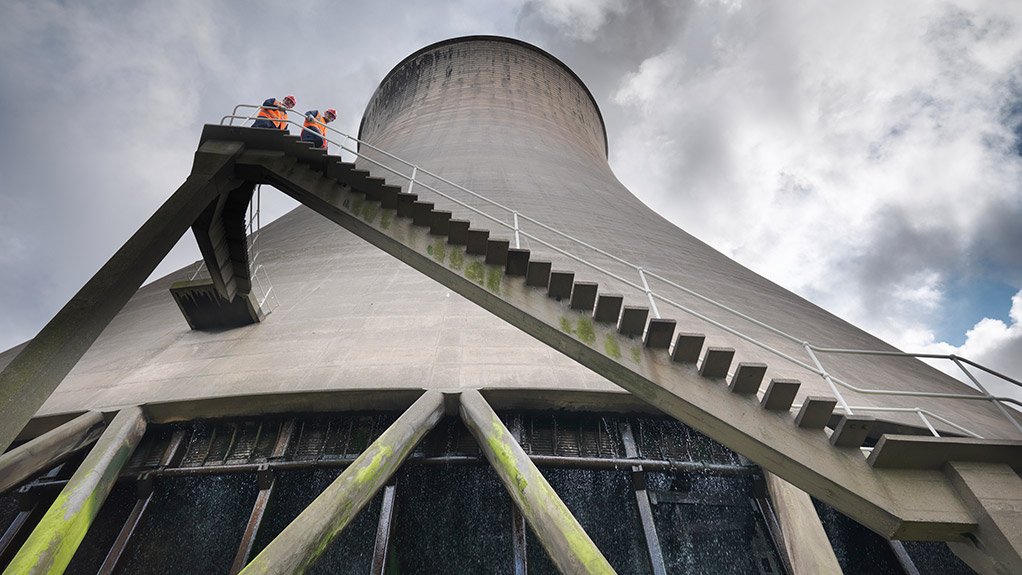Robust, nonclogging materials extend life of cooling towers
The upgrading of a cooling tower’s fill media with components constructed out of robust and non-clogging materials such as polypropylene (PP), polyvinyl chloride (PVC) or stainless steel can lead to cost-effective ways of extending the life of a cooling tower.
According to cooling tower technology company IWC CEO Roger Rusch, fill media are a critical component in the heat transfer process of evaporative cooling systems and act as a medium over which the hot water is distributed as it is being cooled.
“Therefore, fill media’s primary function is to put as much water surface area in contact with as much air for the longest amount of time possible. This also improves the cooling tower’s heat transfer efficiency and reduces its maintenance downtime,” he notes.
When compared to other cooling tower components, Rusch mentions that the fill media are the most susceptible to wear and tear owing to the almost constant exposure to water at high temperatures.
In older cooling towers, fill media were typically constructed out of wood or asbestos cement, which was a disadvantage as wood deteriorates rapidly when compared to modern fill materials such as PP, PVC and stainless steel, he explains.
“We all know the dangers associated with asbestos-containing materials and therefore upgrading a cooling tower’s fill media to these more modern and robust materials can result in significant improvements in heat transfer efficiency.”
Rusch says different types of fill designs are used in cooling tower applications, with the most common being splash and film fill packs. Film packs consist of narrow, closely-placed surfaces over which the hot water spreads, forming a thin coating that comes into contact with air.
“This type of fill media creates a large surface area on which the hot water disperses itself as a thin film that interacts with the air travelling through the tower,” he points out.
In contrast, splash-fill packs are made up of layers of horizontal splash trays into which the water flows, breaking into small droplets. Here, the exchange area for cooling is provided by water droplets and heat exchange occurs on the surface of these droplets.
Rusch adds that film packs constructed out of corrosion-resistant PP or PVC are most commonly used in smaller industrial cooling towers and cooling towers used in heating, ventilating and air-conditioning applications where make-up water quality is good – for instance where the water has low levels of both suspended and dissolved solids.
In cooling tower applications where the recirculating water quality is poor and has high solids content, the non-clogging splash grids or splash tubes are well suited. In high temperature applications where the hot water temperatures exceed 60°C, metallic splash grids such as X- Grids are advisable, he concludes.
Article Enquiry
Email Article
Save Article
Feedback
To advertise email advertising@creamermedia.co.za or click here
Comments
Press Office
Announcements
What's On
Subscribe to improve your user experience...
Option 1 (equivalent of R125 a month):
Receive a weekly copy of Creamer Media's Engineering News & Mining Weekly magazine
(print copy for those in South Africa and e-magazine for those outside of South Africa)
Receive daily email newsletters
Access to full search results
Access archive of magazine back copies
Access to Projects in Progress
Access to ONE Research Report of your choice in PDF format
Option 2 (equivalent of R375 a month):
All benefits from Option 1
PLUS
Access to Creamer Media's Research Channel Africa for ALL Research Reports, in PDF format, on various industrial and mining sectors
including Electricity; Water; Energy Transition; Hydrogen; Roads, Rail and Ports; Coal; Gold; Platinum; Battery Metals; etc.
Already a subscriber?
Forgotten your password?
Receive weekly copy of Creamer Media's Engineering News & Mining Weekly magazine (print copy for those in South Africa and e-magazine for those outside of South Africa)
➕
Recieve daily email newsletters
➕
Access to full search results
➕
Access archive of magazine back copies
➕
Access to Projects in Progress
➕
Access to ONE Research Report of your choice in PDF format
RESEARCH CHANNEL AFRICA
R4500 (equivalent of R375 a month)
SUBSCRIBEAll benefits from Option 1
➕
Access to Creamer Media's Research Channel Africa for ALL Research Reports on various industrial and mining sectors, in PDF format, including on:
Electricity
➕
Water
➕
Energy Transition
➕
Hydrogen
➕
Roads, Rail and Ports
➕
Coal
➕
Gold
➕
Platinum
➕
Battery Metals
➕
etc.
Receive all benefits from Option 1 or Option 2 delivered to numerous people at your company
➕
Multiple User names and Passwords for simultaneous log-ins
➕
Intranet integration access to all in your organisation



















